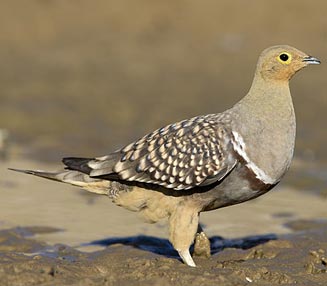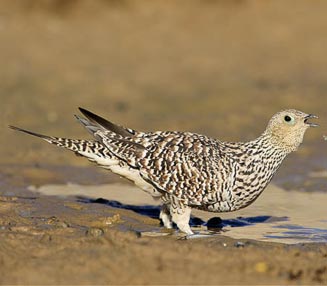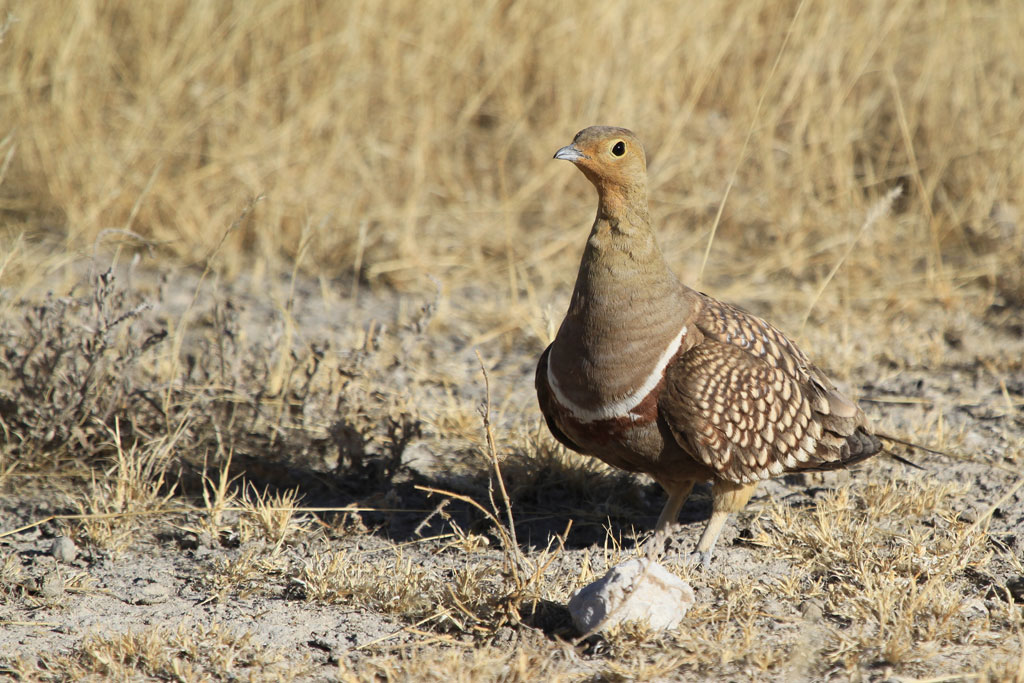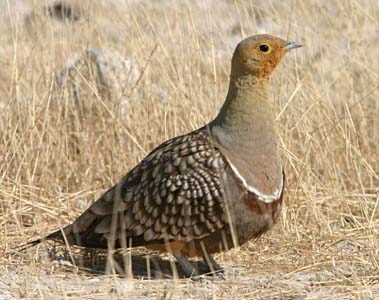
Pterocles namaqua
TAXONOMY
Tetrao namaqua Gmelin, 1789, Namaqualand, South Africa.
Monotypic.
OTHER COMMON NAMES
French: Ganga Namaqua, ganga de Namaland; German: Namaflughuhn;
Spanish: Ganga Namaqua.
PHYSICAL CHARACTERISTICS
9.4–11 in (24–28 cm); 5–8.5 oz (143–240 g). Medium-sized; tail
wedge-shaped; central, elongated tail feathers. Male has yellowish
olive head, breast and mantle; double breast-band white,
bordered below with maroon; belly and back brown; back spotted
pearl-gray. Female mostly barred brown and buff; streaked
brown and buff on head and neck.
DISTRIBUTION
Southern Africa from extreme southwestern Angola through
Namibia to Botswana and western South Africa.
HABITAT
Open desert and semi-desert, usually stony with low shrubs;
sandy desert with scattered grass tufts.
BEHAVIOR
Gregarious, except when nesting. Flocks may number several
hundred or thousands of birds at watering points. Usually
drinks in the morning up to three hours after sunrise; some
birds may drink only every three to five days. Feeding grounds
may be 35 mi (60 km) from nearest palatable drinking water.
Flies up to 45 mi (70 km) per hour; birds in flock keep contact
with an intermittent, three-note call.
FEEDING ECOLOGY AND DIET
Feeds mainly on small, dry seeds picked up from surface of
soil. Drinking water needed to augment lack of water in food
and for evaporative cooling in hot weather.
REPRODUCTIVE BIOLOGY
Nests solitarily on open ground, which is usually stony and
shrubby. Nest is shallow scrape lined with some pebbles and
bits of dry vegetation. Clutch of three well camouflaged eggs
incubated by female during day and by male at night for about
three weeks. Chicks leave nest within 24 hours of hatching; can
fly at about a month. Chicks dependent on male parent for water
for two to three weeks until able to fly to water.
CONSERVATION STATUS
Common to abundant throughout limited range; not threatened.
SIGNIFICANCE TO HUMANS
Important gamebird, hunted for food and sport. Presently under
intensive study as subject for game management.
Other popular Animals
Photo Gallery of - Namaqua sandgrouse




 Animalia Life
Animalia Life